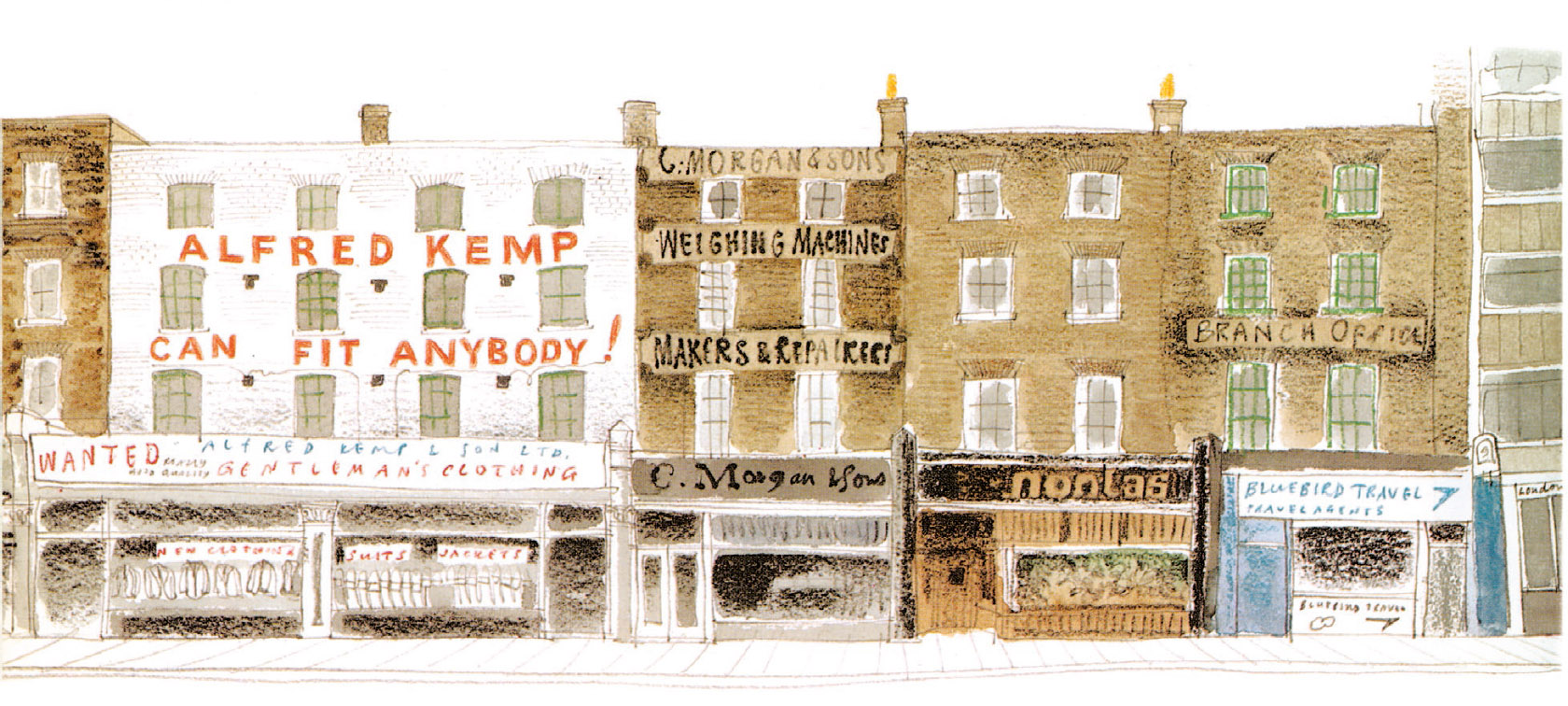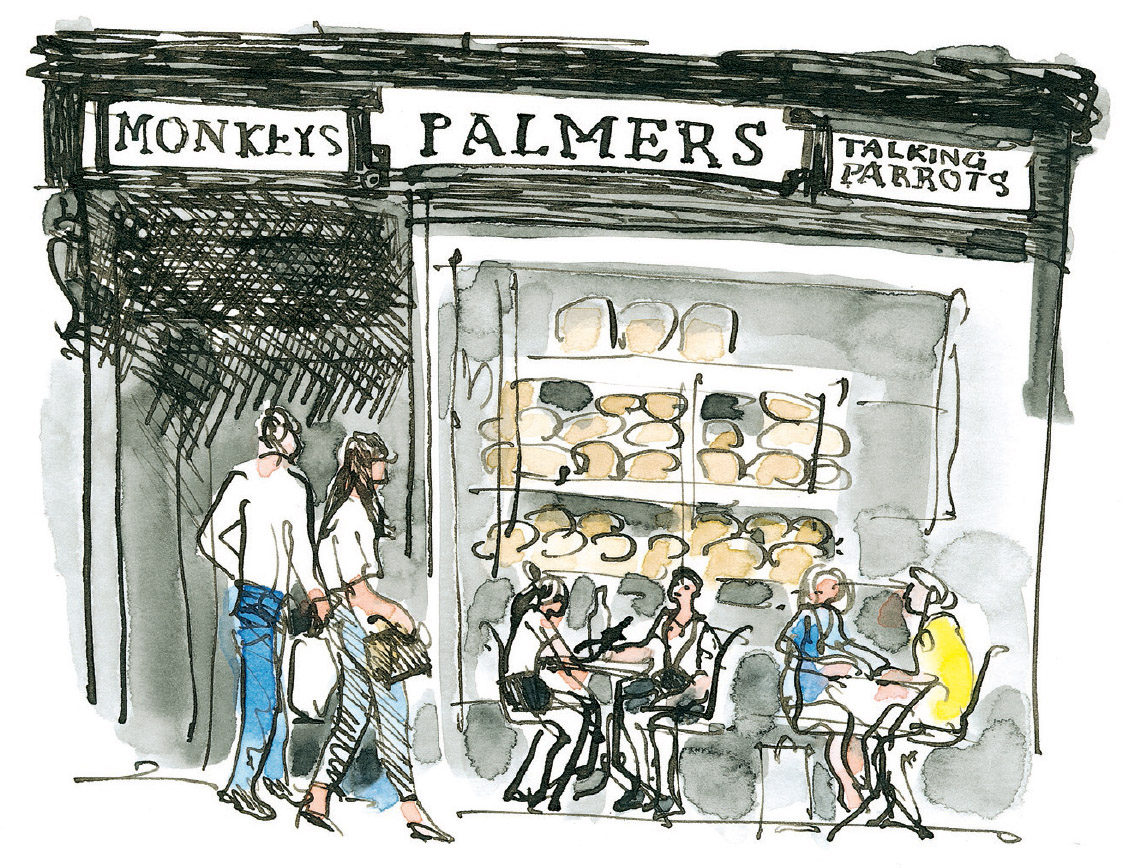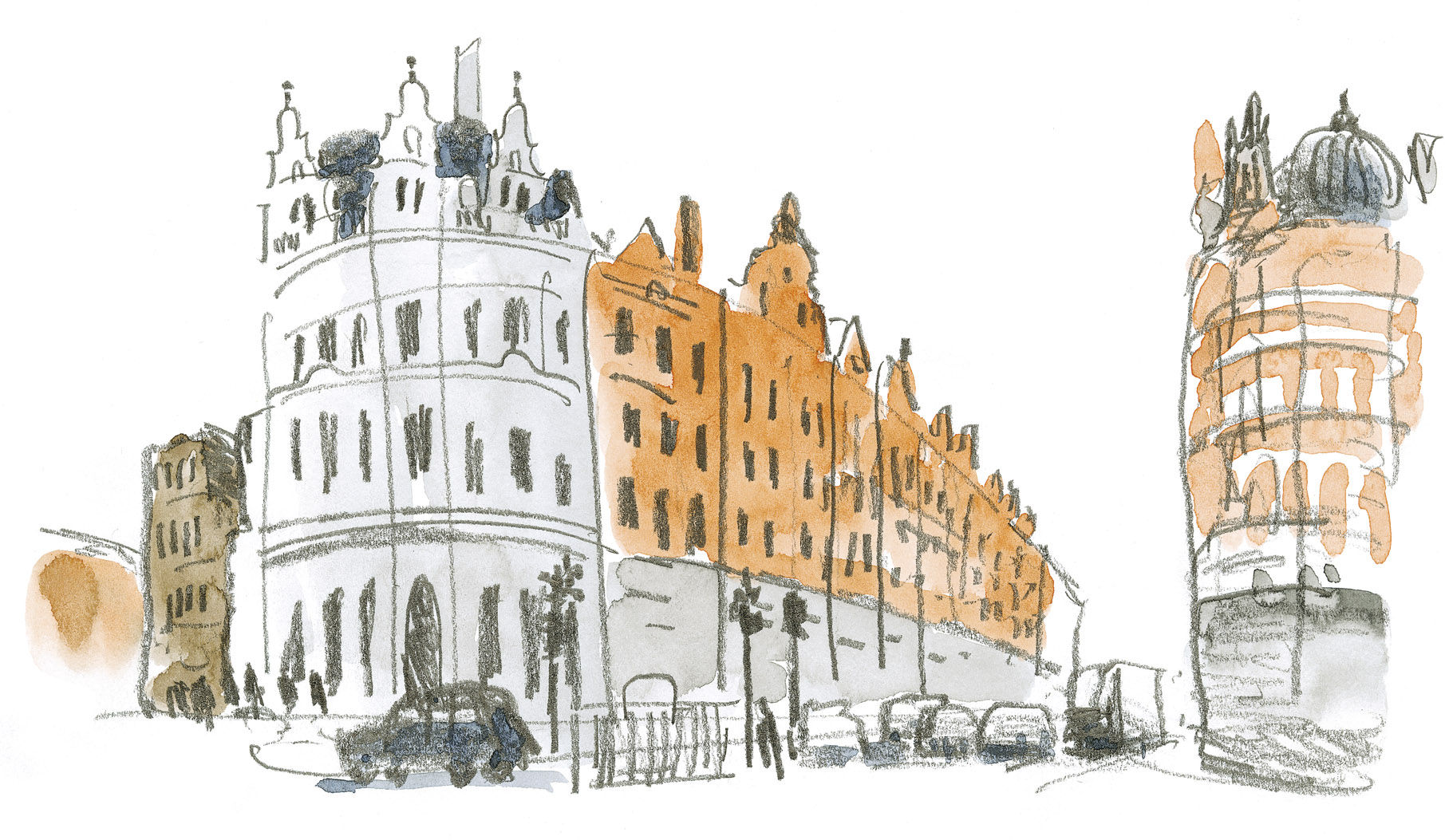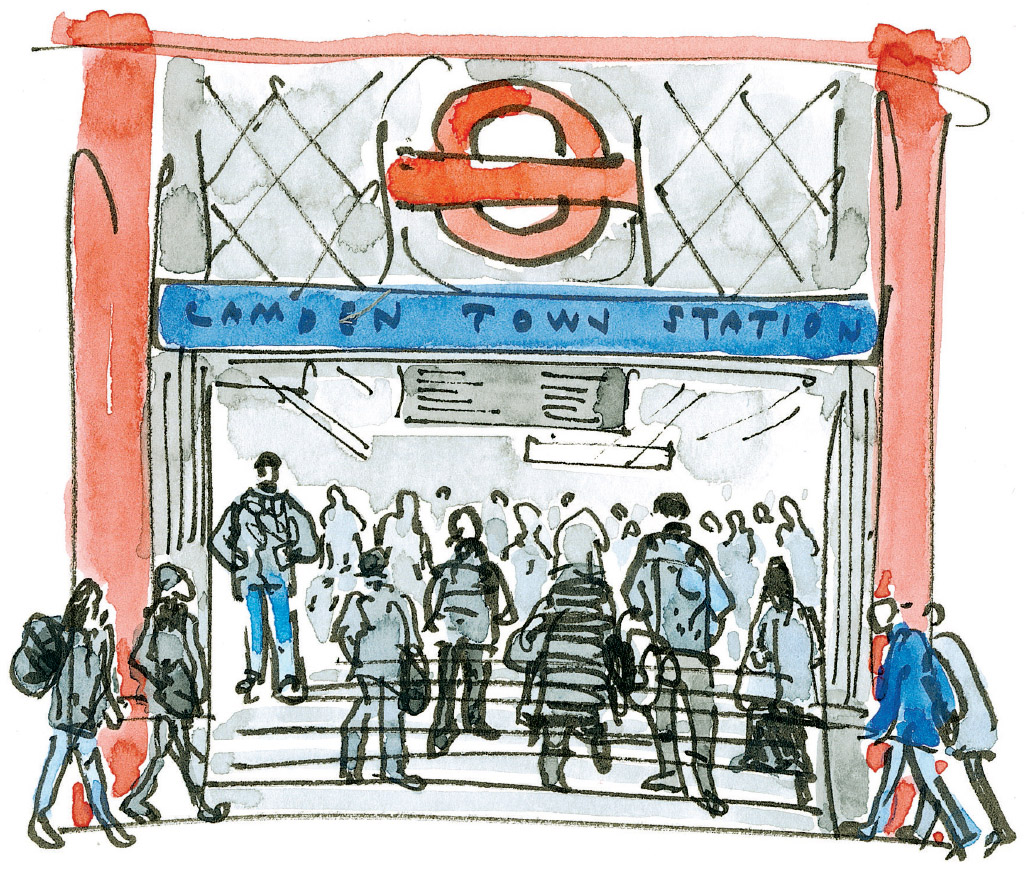High Street
When I first came here I was too busy with commissions and deadlines to draw Camden High Street, until the need for a Christmas card impelled me to engrave one of the local fruit-barrows. The street rose to fame as a busy stretch of small, friendly and individually run shops with traditional facades, but it is now a more anonymous shopping street that has seen better days. But a few splendid remnants are still standing: Britannia Junction, Camden Town’s central crossroads, is a vibrant traffic-filled open space surrounded by banks and what used to be pubs, and on the pavements by visitors, dealers, buskers, beggars and people sleeping rough. At Camden High Street’s southern end one of the old Edwardian theatres and music-halls is flourishing as Koko, a dance venue. Almost out of sight beyond the Mornington Crescent tube station is a corner of Greater London House, previously Carreras’ cigarette factory; behind that but invisible from the main street is the beautifully curving Mornington Crescent itself. Apart from the architectural mix, the most tempting things to draw on this street are the people: young, cheerful, wildly dressed and, like the stallholders themselves, cosmopolitan and polyglot.
Vanished shopfronts in the Camden High Street and Hampstead Road; the first have been tidied up, the second demolished. Nearby there used to be an art materials shop, handy for the Euston Road artists and the Slade students.


The name of the Dublin Castle reflects the immigrant labourers who dug the canal and the railway cuttings.



Britannia Junction is an open space for performing, hanging around and meeting people in, and a bus and tube intersection where six roads meet. Strange but popular square wooden benches have been added since I drew it, good for chatting on and for keeping cars off the pavement.
The more recent newcomers – chain stores, supermarkets – have their own familiar brand shopfront fascias at ground-floor level but above this most of them put up with nondescript existing facades, and some are now becoming being victims of online shopping and closing down.

Six intersecting roads, each with its own vistas and vanishing points and different in character, and good seen from the top of a bus.



Buskers come out in force on Saturdays and Sundays – professional, well costumed and friendly to the audiences that cluster round them. Their activity is a good subject because it’s both interesting and repetitive.





On the High Street, people sleeping rough are shocking presences as soon as you leave the Underground. Passers-by intent on their errands are too busy to notice or mind or stop for those who are begging or busking around them. The determined man who patiently chalks his own thoughts on the pavement is unmistakeable and hard at work; the others are just there, waiting.

Crowds moving about are fascinating but difficult to capture on paper. Usually there’s no time to draw them carefully, but having to jot down figures running past before they vanish can help even a scribble to look vivid and real, as if it had been drawn in a sort of shorthand. Including people gives scale to a scene, and drawing attitudes, clothes and movements can give life to it. Character is interesting, caricature isn’t.


Carreras’ cigarette factory, a handsome art deco building of the late twenties and a monument to a profitable if deadly product. Its facade is in Egyptian Revival style; now it houses offices and amenities. It was built on a public garden, obliterating the views of and from the real Mornington Crescent that survives just behind it. This crescent was home to Dickens and the Camden Town Group of painters, Sickert, Gilman and Spencer Gore, and Auerbach’s studio is nearby.


